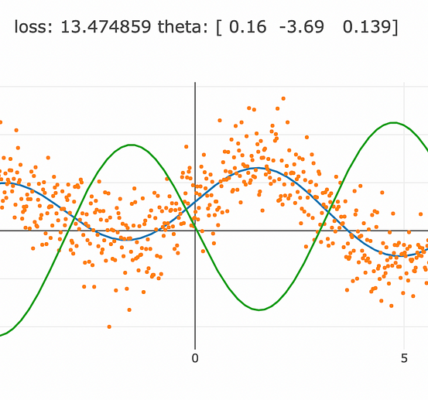Table of Contents
Artificial Intelligence (AI) has been advancing rapidly, with AI models evolving to exhibit more human-like behaviors and capabilities. One fascinating area within AI research is the development of anthropic AI models, which aim to emulate human-like characteristics, such as emotions, reasoning, and social intelligence. In this comprehensive guide, we’ll delve into the principles, methodologies, and techniques involved in creating anthropic AI models.
1. Understanding Anthropic AI:
Anthropic AI refers to AI systems that mimic human-like characteristics and behaviors. These characteristics may include emotions, empathy, creativity, and social skills. The goal of creating anthropic AI models is to bridge the gap between human intelligence and artificial intelligence, enabling machines to interact with humans in a more natural and intuitive manner.
2. Core Concepts in Anthropic AI:
- Emotional Intelligence: One of the key aspects of anthropic AI is emotional intelligence. This involves the ability of AI systems to recognize, understand, and respond to human emotions. Techniques such as sentiment analysis, affective computing, and emotion recognition algorithms are employed to imbue AI models with emotional intelligence.
- Social Intelligence: Anthropic AI models also need to possess social intelligence to effectively interact with humans and other AI entities. This includes skills such as understanding social cues, maintaining conversations, and exhibiting appropriate social behaviors. Social simulation techniques and natural language processing (NLP) algorithms are often utilized to develop social intelligence in AI models.
- Cognitive Abilities: Another important aspect of anthropic AI is cognitive abilities, which encompass skills such as reasoning, problem-solving, and decision-making. AI models need to be able to process complex information, infer meaning from context, and make intelligent decisions based on available data. Cognitive architectures, such as neural networks and symbolic AI, are leveraged to imbue AI models with cognitive abilities.
3. Methodologies for Creating Anthropic AI Models:
- Data Collection and Annotation: The first step in creating anthropic AI models is to collect and annotate relevant data. This may include text corpora for language understanding tasks, facial expression datasets for emotion recognition, and interaction logs for social intelligence tasks. The data needs to be labeled and annotated to facilitate supervised learning algorithms.
- Feature Engineering: Feature engineering plays a crucial role in extracting meaningful features from raw data to represent human-like characteristics. For example, in emotion recognition tasks, features such as facial expressions, tone of voice, and body language may be extracted from multimedia data. Similarly, in language understanding tasks, features such as word embeddings and syntactic structures may be extracted from text data.
- Model Selection and Training: Once the data is collected and features are engineered, the next step is to select appropriate AI models and train them using the available data. This may involve training deep learning models, such as recurrent neural networks (RNNs) or transformer architectures, for language understanding tasks. For emotion recognition tasks, convolutional neural networks (CNNs) or ensemble learning techniques may be employed.
- Evaluation and Validation: After training the AI models, it’s essential to evaluate their performance and validate their effectiveness in emulating human-like characteristics. This may involve conducting extensive testing, using metrics such as accuracy, precision, recall, and F1-score for classification tasks, or employing human evaluators to assess the naturalness and believability of the AI-generated outputs.
4. Ethical Considerations in Anthropic AI:
- Bias and Fairness: One of the primary ethical concerns in anthropic AI is the presence of bias in AI models, which can lead to unfair treatment of individuals from certain demographic groups. It’s crucial to mitigate bias in AI algorithms by carefully selecting and preprocessing training data, as well as regularly monitoring and auditing AI systems for fairness and transparency.
- Privacy and Consent: Anthropic AI models often interact with sensitive personal data, such as emotions, preferences, and behavioral patterns. It’s essential to prioritize user privacy and obtain informed consent before collecting and processing personal data. Transparent communication about the capabilities and limitations of anthropic AI systems is also crucial for building trust with users.
- Human-AI Collaboration: While anthropic AI models aim to emulate human-like characteristics, they should complement rather than replace human intelligence. It’s essential to foster collaboration between humans and AI systems, leveraging the strengths of each to solve complex problems and enhance decision-making processes. This involves designing AI systems with user-centric interfaces and providing opportunities for human oversight and intervention.
5. Future Directions in Anthropic AI:
- Multi-Modal Learning: Future research in anthropic AI is likely to focus on multi-modal learning, where AI models can integrate information from multiple sensory modalities, such as vision, audition, and touch. This will enable AI systems to perceive and interpret the world in a more holistic manner, similar to human perception.
- Explainable AI: Another area of interest is explainable AI, where AI models are designed to provide transparent explanations for their decisions and actions. This is crucial for building trust and understanding between humans and AI systems, especially in high-stakes applications such as healthcare and finance.
- Personalized Interaction: Personalized interaction is also a promising direction, where anthropic AI models can adapt their behavior and responses based on individual user preferences, characteristics, and past interactions. This will enable more engaging and effective human-AI interactions, tailored to the unique needs and preferences of each user.
Code Example: Sentiment Analysis with TensorFlow
import tensorflow as tf
from tensorflow.keras.layers import Embedding, LSTM, Dense
from tensorflow.keras.models import Sequential
from tensorflow.keras.preprocessing.text import Tokenizer
from tensorflow.keras.preprocessing.sequence import pad_sequences
# Sample data
texts = ["I love this movie!",
"This pizza is terrible.",
"The weather today is amazing.",
"I feel sad."]
labels = [1, 0, 1, 0] # 1 for positive sentiment, 0 for negative sentiment
# Tokenization and padding
tokenizer = Tokenizer()
tokenizer.fit_on_texts(texts)
sequences = tokenizer.texts_to_sequences(texts)
max_len = max([len(seq) for seq in sequences])
padded_sequences = pad_sequences(sequences, maxlen=max_len, padding='post')
# Define model
model = Sequential([
Embedding(input_dim=len(tokenizer.word_index) + 1, output_dim=16, input_length=max_len),
LSTM(32),
Dense(1, activation='sigmoid')
])
model.compile(optimizer='adam', loss='binary_crossentropy', metrics=['accuracy'])
# Train model
model.fit(padded_sequences, labels, epochs=10, verbose=1)
# Evaluate model
loss, accuracy = model.evaluate(padded_sequences, labels, verbose=0)
print("Accuracy:", accuracy)This code demonstrates a basic sentiment analysis model using a recurrent neural network (RNN) implemented with TensorFlow. The model is trained on a small dataset of labeled sentences to classify sentiment as positive or negative. The accuracy of the model is then evaluated and printed as the final output.
In conclusion, the field of anthropic AI holds immense potential for revolutionizing human-computer interaction and advancing AI technology to new frontiers. By integrating principles from psychology, neuroscience, and computer science, researchers and practitioners can work together to create AI systems that not only emulate human-like behaviors but also enrich our lives in meaningful ways. As we continue to push the boundaries of AI research, it’s essential to prioritize ethical principles, transparency, and




